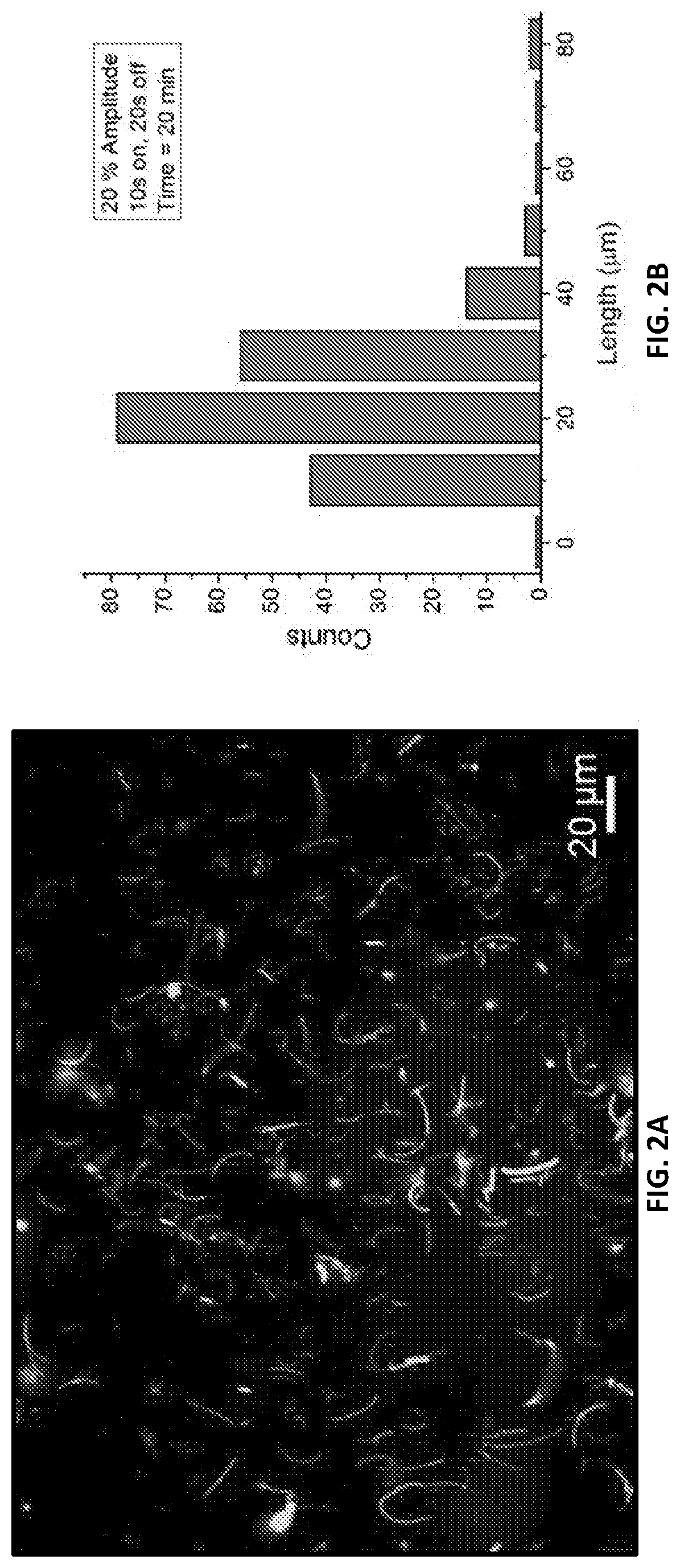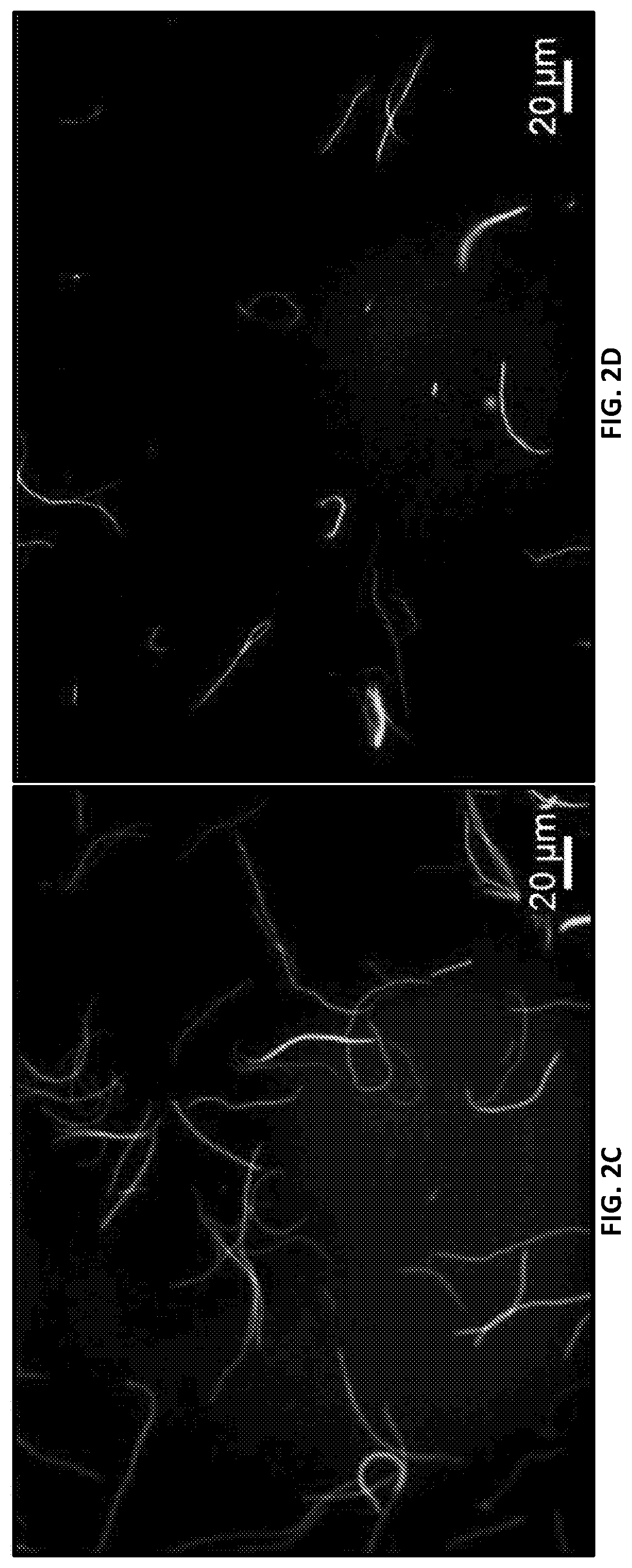Nanofiber microspheres and methods os use thereof
a technology of nanofiber and microspheres, which is applied in the field of nanofiber structures, can solve the problems of limited methods, affecting the method of fabrication can critically affect the morphology, texture and particle size distribution of nanofiber microspheres, so as to improve tissue regeneration, promote tissue regeneration, and reduce the effect of infection
- Summary
- Abstract
- Description
- Claims
- Application Information
AI Technical Summary
Benefits of technology
Problems solved by technology
Method used
Image
Examples
example 1
Materials and Methods
Materials
[0087]PCL (Mw=80,000 and 45,000; Sigma), type A gelatin from porcine skin (300 g Bloom; Sigma), poly-lactic-co-glycolic acid (PLGA with 50:50 ratio of lactic acid-glycolic acid and ester-terminated, Mw≈30,000-50,000 from LACTEL absorbable polymers), sodium alginate (Sigma), tetraethylene orthosilicate (Sigma), triethyl phosphate (Sigma), Ca(NO3)2.4H2O (Sigma), and glutaraldehyde (GA) (alcoholic solution).
Fabrication of Electrospun Polymeric and Bioactive Glass Fibers
[0088]Electrospinning was employed to fabricate NFs of various compositions. The following compositions of NFs were electrospun for the present study: (i) PCL-gelatin in 1:1 ratio; (ii) poly-lactic-co-glycolic acid (PLGA with 50:50 monomer ratio)-type A gelatin in 1:1 ratio; (iii) poly-lactic-co-glycolic acid (PLGA with 50:50 monomer ratio)-type A gelatin in 3:1 ratio; and (iv) bioactive glass (Ca / P / Si) fibers. The PCL-gelatin and PLGA-gelatin electrospinning solutions were prepared by disso...
example 2
[0119]The issue of bone loss in the oral cavity continues to be a perennial problem, especially in the older populations (Jeffcoat, M. K., J. Bone Miner. Res. (1993) 8:S467-S473). One of the primary causes for bone loss in the oral cavity is periodontitis. A recent survey report on the prevalence of periodontitis gave an estimate of 1 in 2 adults aged≥30 years suffering chronically from the disease (Eke, et al., J. Periodontol. (2015) 86:611-622.). Bacterial infection and host response inflammation during periodontitis can lead to erosion of the alveolar bone that supports the teeth, periodontal ligaments, and adjacent soft tissue, thus leading the tooth to become nonfunctional (Haze, et al., J. Cell. Mol. Med. (2009) 13:1110-1124). The removal of the infected tooth can further lead to resorption of the alveolar bone (Hansson, et al., J. Dent. Biomech. (2012) 3:1758736012456543). As bone is a mechanosensitive tissue, the lack of masticatory function at the site of tooth loss can lea...
PUM
| Property | Measurement | Unit |
|---|---|---|
| diameter | aaaaa | aaaaa |
| length | aaaaa | aaaaa |
| lengths | aaaaa | aaaaa |
Abstract
Description
Claims
Application Information
 Login to View More
Login to View More - R&D
- Intellectual Property
- Life Sciences
- Materials
- Tech Scout
- Unparalleled Data Quality
- Higher Quality Content
- 60% Fewer Hallucinations
Browse by: Latest US Patents, China's latest patents, Technical Efficacy Thesaurus, Application Domain, Technology Topic, Popular Technical Reports.
© 2025 PatSnap. All rights reserved.Legal|Privacy policy|Modern Slavery Act Transparency Statement|Sitemap|About US| Contact US: help@patsnap.com



